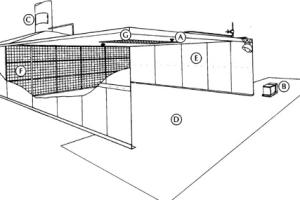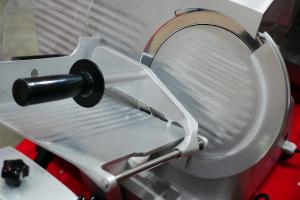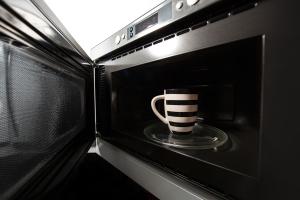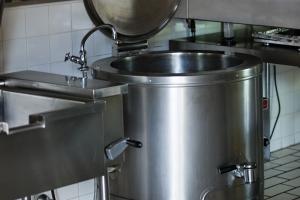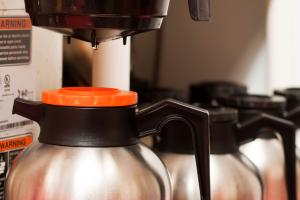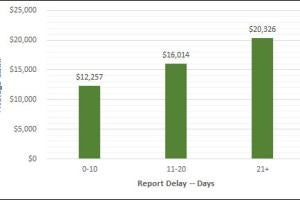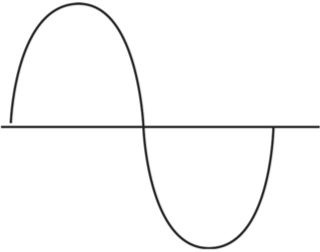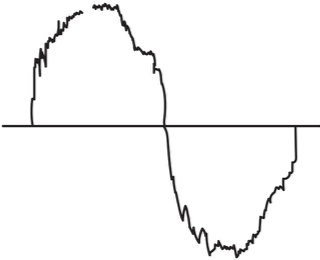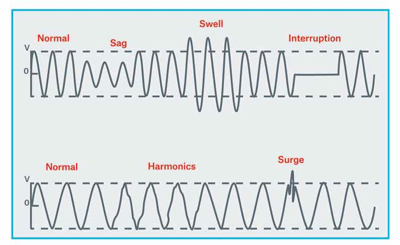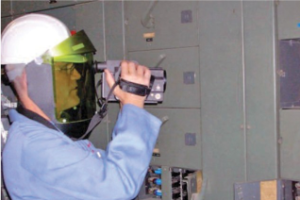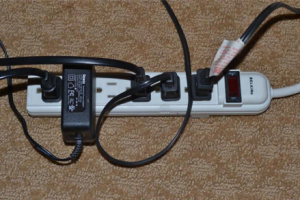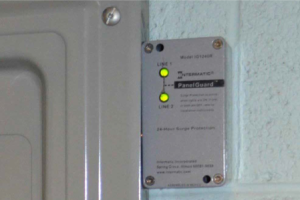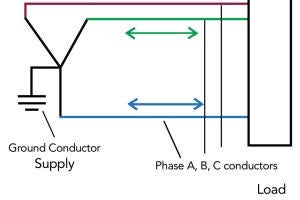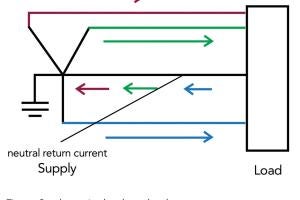Protections for whistleblowers: what employers need to know
Article provided courtesy of Jackson Lewis
Under federal and state laws, “whistleblowers” — individuals who expose employer misconduct — are protected against retaliation under certain circumstances. However, with the growing array of statutes and regulations seeking to regulate whistleblowing, insurers and insureds should be well-versed in potential retaliation actions that may be asserted by employees who “blow the whistle.” Discussed herein are recent developments concerning three of the most significant laws protecting whistleblowers: the Dodd-Frank Act, the Sarbanes-Oxley Act, and the Foreign Corrupt Practices Act. Employers and insurers should note that many states also have whistleblowing protections that are broader than the protections available under federal statutes.
I. Dodd-Frank Act whistleblower protections require more than internal reporting, federal appeals court rules
In a departure from a steady stream of federal district court decisions broadly construing the anti-retaliation provisions of the Dodd-Frank Act of 2010 (“DFA”), the Fifth Circuit Court of Appeals, in New Orleans, has limited the scope of the term “whistleblower” under those provisions to apply only to employees who actually report information relating to a violation of securities laws to the U.S. Securities and Exchange Commission(“SEC”), thus reducing employers’ exposure to such claims. Asadi v. G.E. Energy, No. 12-20522 (5th Cir. July 17, 2013).
Khaled Asadi, a former G.E. Energy executive, alleged he was fired after reporting a possible securities law violation to his supervisor and the company’s regional ombudsman. Asadi claimed he was protected by the anti-retaliation provisions of the DFA, even though, indisputably, he did not provide any information to the SEC, and therefore, did not meet the express statutory definition of the term “whistleblower.” Instead, he argued that his internal reports were protected based on purportedly conflicting language in the statute’s anti-retaliation provision. He argued that the DFA’s anti-retaliation provision protects those who make disclosures that are protected under SOX, even if they do not report a violation to the SEC.
Rejecting Asadi’s argument, the Fifth Circuit concluded that the plain language and structure of the statute compelled the conclusion that internal communications alone were not protected. It so doing, the Court disagreed with numerous district court decisions that have held to the contrary. See, e.g., Murray v. UBS Secs., LLC, 2013 U.S. Dist. LEXIS 71945 (S.D.N.Y. May 21, 2013); Genberg v. Porter, 2013 U.S. Dist. LEXIS 41302 (D. Colo. Mar. 25, 2013); Kramer v. Trans-Lux Corp., 2012 U.S. Dist. LEXIS 136939 (D. Conn. Sept. 25, 2012); Nollner v. S. Baptist Convention, Inc., 852 F. Supp. 2d 986, 994 n.9 (M.D. Tenn. 2012). It also rejected the SEC’s similar administrative interpretation of the statute.
Based on district court decisions, many employers, not surprisingly, had begun to question whether internal reporting mechanisms they had adopted were simply a trap waiting to ensnare them in DFA whistleblower litigation, rather than the constructive vehicle they had envisioned for achieving compliance through transparency and self-regulation. The Fifth Circuit’s decision may provide a welcome tonic for employers’ concerns.
In light of Asadi, employers should re-evaluate and update their corporate internal reporting mechanisms or so-called whistleblower hotlines. Supported by employee awareness programs, these avenues of communication should encourage internal reporting. Adopting clear language and process, articulating strong assurances from senior management of protection from retaliation, and managing expectations of those who employ the procedure to make reports also are essential.
Employers must manage internal resources effectively. They must respond promptly, conduct diligent internal review, take appropriate corrective action, and self-report as warranted. Employees of organizations that deliver on their promises are less likely to resort to the SEC. While reporting to the SEC ultimately may be warranted in some situations, the employer will have the opportunity to be involved and in some measure to affect the course of events.
II. The Sarbanes-Oxley Act
A. Does the Sarbanes-Oxley Act apply to employees of private contractors? Supreme Court to give answer
Through Section 806 of the Sarbanes-Oxley Act (“SOX”), a federal statute that applies to publically-traded companies, Congress created a private cause of action for individuals who have suffered retaliation after reporting fraud or violations of securities regulations. The section provides that no company covered by SOX or “any officer, employee, contractor, subcontractor, or agent of such company, may discharge, demote, suspend, threaten, harass, or in any other manner discriminate against an employee” in providing information of a potential violation of SOX. 18 U.S.C. §1514A(a) (2013) (emphasis added).
Recently, the U.S. Supreme Court agreed to determine whether an employee of a private employer can invoke the SOX whistleblower provision against that private company, solely because the private company is a contractor of a SOX-covered entity. In the first SOX case it has accepted, the Court will review the First Circuit’s decision in Lawson v. FMR, LLC, 670 F.3d 61 (1st Cir. 2012), wherein the appeals court ruled that employees of privately-held companies are not covered by the Section 806 whistleblower protections of SOX even if their employer does business with a publicly-traded company. The Department of Labor’s (“DOL”) Administrative Review Board (“ARB”), however, reached the opposite conclusion in Spinner v. David Landau & Associates, LLC, ARB Nos. 10-111, 10-115 (May 31, 2012). Seeking to expand SOX’s reach, the ARB held that Section 806 applies to employees of privately-held companies if they have contracts with publicly-traded companies.
Lawson involved two former employees of privately-held companies providing investment advice and fund management services to publicly-held mutual funds. They claimed their employer had retaliated against them for reporting alleged improper registration statements and accounting practices in violation of SOX. Determining that this case did not fall within the protections of Section 806, the First Circuit court rejected the plaintiffs’ contention that an “employee” afforded whistleblower protection under SOX includes not only the employees of public companies, but also the employees of that company’s contractors and subcontractors. See Lawson, 670 F.3d at 67-68. Further, the court found the meaning of “employee” to be unambiguous within the context of Section 806 and that, under the Chevron case, the court therefore owed no deference to a contrary DOL interpretation. (The Supreme Court ruled in Chevron that agency interpretations of ambiguous statutes will be upheld so long as they are reasonable.)
In contrast, Spinner considered whether the plaintiff, an employee of a privately-held internal auditing firm offering services to publicly-traded companies, was entitled to protection under Section 806. Finding in favor of the plaintiff and rejecting the First Circuit’s interpretation in Lawson, the ARB announced that “accountants employed by private accounting firms, who in turn provide SOX compliance services to publicly traded corporations, are covered as employees of contractors under Section 806.”
The Supreme Court’s review of Lawson presents three important concerns:
- Whether Section 806 extends to employees of private companies who have contracts with public companies;
- How much deference federal courts should afford interpretations of the Department of Labor; and,
- Whether the Section 806 issue currently is ripe for review by the Supreme Court.
A Supreme Court ruling that Section 806 applies to employees of private contractors would expand the scope of the provision’s whistleblower protection greatly, while a contrary ruling will act as a restraint on the current ARB/DOL, which many consider to be seeking to expand the application of SOX. The Court likely will take this opportunity to decide whether federal courts should defer to the DOL’s construction of SOX, clarifying the proper relationship between federal courts and the DOL regarding interpretation of Section 806. Employers should continue to limit their exposure to retaliation claims by implementing strong internal reporting mechanisms and taking whistleblower complaints seriously.
B. Third Circuit adopts DOL’s liberal test for determining protected whistleblower activity under SOX
Earlier this year, the U.S. Court of Appeals for the Third Circuit became the first federal Circuit Court to adopt the liberal “reasonable belief” standard for determining protected activity under the whistleblower provisions of SOX. Wiest v. Lynch, No. 11-4257 (3d Cir. Mar. 19, 2013). In doing so, the court rejected case law requiring a plaintiff-employee’s internal complaint to relate “definitively and specifically” to a statute or regulation specified in Section 806 of SOX in order for the employee’s communication to be considered protected activity. The Third Circuit’s holding represents a significant, employee-friendly development in cases brought under SOX’s whistleblower provision. The Court has jurisdiction over Delaware, New Jersey, Pennsylvania, and the U.S. Virgin Islands.
Jeffrey Wiest, a former accountant for the defendant company, filed a complaint alleging his former employer had terminated his employment in violation of SOX after he raised concerns to his supervisors about certain corporate expenditures. The U.S. District Court for the Eastern District of Pennsylvania granted the employer’s motion to dismiss Wiest’s claims. It found the concerns Wiest raised did not meet the “definitively and specifically” standard announced by the ARB in Platone v. FLYi, ARB No. 04-154, ALJ No. 2003-SOX-27 (ARB Sept. 29, 2006). Under the “definitively and specifically” standard, to be protected, an employee’s communication regarding suspected fraud had to assert specific elements of securities fraud.
On appeal, the Third Circuit reversed the dismissal of two of the Wiest’s SOX retaliation claims. In doing so, the Court adopted the “reasonable belief” standard first articulated by the ARB in Sylvester v. Parexel International, LLC, ARB No. 07-123, ALJ Nos. 2007-SOX-39, 42 (ARB May 25, 2011). Under the “reasonable belief” standard, employees making internal communication regarding questionable conduct need only believe the objectionable conduct violates a SOX provision, provided that a person with the same training and experience also would think the complained-about conduct could violate the Act. Although Sylvester was announced in May 2011, no Circuit Court had adopted the decision or rejected the “definitively and specifically” standard — until now. In fact, even after Sylvester, many district courts continued to use the “definitively and specifically” standard in ruling on SOX whistleblower claims, leading even the DOL to wrestle with the impact of Sylvester on new SOX claims.
In a vigorous dissent, Circuit Judge Kent A. Jordan observed in Wiest that it would be difficult for an employer to know or suspect an employee has engaged in protected conduct if the employee does not adequately communicate his or her concerns in an understandable way to the employer. Judge Jordan echoed Platone when he observed that “[w]hat matters is not what is locked in the plaintiff’s mind or how the plaintiff may later describe his actions; it is what is communicated to the employer that counts.”
Wiest represents a significant development in SOX jurisprudence. Moreover, it is an expansion of employee rights in this area of law that cannot be overstated. The decision makes an employer’s duty to investigate claims of corporate fraud more difficult and complicates an employer’s ability to take necessary employment action with respect to potential whistleblowers.
III. Government releases long-awaited Foreign Corrupt Practices Act resource guide
The Foreign Corrupt Practices Act (“FCPA”) prohibits bribery of foreign officials. Essentially, the FPCA prohibits an “issuer” — a U.S. company that issues securities — or any of its officers, directors, employees, agents, or stockholders to: 1) make use of interstate commerce (mail or any means or instrumentality of interstate commerce); 2) corruptly; 3) in furtherance of an offer, payment, promise to pay, or authorization of the payment of any money, or offer, gift, promise to give, or authorization of the giving of anything of value to; 4) a foreign official — directly or indirectly; 5) for the purpose of influencing that foreign official.
At the end of 2012, the Department of Justice (“DOJ”) and the SEC issued their much-awaited regulatory guidance entitled, “A Resource Guide to the U.S. Foreign Corrupt Practice Act.” The guide is a comprehensive overview of the FCPA. More importantly, it describes the DOJ’s and the SEC’s enforcement approach and priorities in relation to the FCPA. Therefore, the guide, released November 14, 2012, provides critical insight as to how these regulatory and law enforcement organizations will assess potentially wrongful conduct within corporate organizations. It also offers insight on how these agencies will determine whether to hold an employer organization responsible for the misdeeds of its employees or agents.
The guide acknowledges that each investigation requires fact-specific review and analysis. It notes that presence of a corporate compliance program is a common factor in determining whether there will be organizational liability and whether the organization will be subject to prosecution, regulatory fines, or otherwise shielded from responsibility. In the guide, the DOJ and SEC take a “common-sense and pragmatic approach” to evaluating an organization’s compliance program by asking three simple, albeit broad, questions:
- Is the company’s compliance program well-designed?
- Is it being applied in good faith?
- Does it work?
Applying the guidance offered by the guide, the following are some of the “hallmarks” of an effective compliance program:
- Commitment from senior management and a clearly articulated policy against corruption
- Code of conduct and compliance policies and procedures
- Oversight, autonomy, and resources
- Risk assessment
- Training and continuing advice
- Incentives and disciplinary measures
- Third-party due diligence and payments
- Confidential reporting and internal investigations
- Continuous Improvement: periodic testing and review
- Pre-acquisition due diligence and post-acquisition integration (in the context of mergers and acquisitions)
The new guide now makes clear that effective compliance programs not only are a requirement, but an essential tool for an organization’s own survival and well-being. Company boards, senior management teams, and corporate officers are unequivocally on notice that mediocre compliance programs represent a dereliction of duty. Moreover, compliance programs assist employers in successfully defending against whistleblower claims.
The time is now for employers to develop, update, or polish-off their corporate compliance programs. As important as any capital asset, a best practice corporate compliance program can literally mean the difference between an organization that prospers (notwithstanding the misdeeds of wayward employees) or an organization that falters in the face of an FCPA problem.
Protections for whistleblowers: what employers need to know
Article provided courtesy of Jackson Lewis
Under federal and state laws, “whistleblowers” — individuals who expose employer misconduct — are protected against retaliation under certain circumstances. However, with the growing array of statutes and regulations seeking to regulate whistleblowing, insurers and insureds should be well-versed in potential retaliation actions that may be asserted by employees who “blow the whistle.” Discussed herein are recent developments concerning three of the most significant laws protecting whistleblowers: the Dodd-Frank Act, the Sarbanes-Oxley Act, and the Foreign Corrupt Practices Act. Employers and insurers should note that many states also have whistleblowing protections that are broader than the protections available under federal statutes.
I. Dodd-Frank Act whistleblower protections require more than internal reporting, federal appeals court rules
In a departure from a steady stream of federal district court decisions broadly construing the anti-retaliation provisions of the Dodd-Frank Act of 2010 (“DFA”), the Fifth Circuit Court of Appeals, in New Orleans, has limited the scope of the term “whistleblower” under those provisions to apply only to employees who actually report information relating to a violation of securities laws to the U.S. Securities and Exchange Commission(“SEC”), thus reducing employers’ exposure to such claims. Asadi v. G.E. Energy, No. 12-20522 (5th Cir. July 17, 2013).
Khaled Asadi, a former G.E. Energy executive, alleged he was fired after reporting a possible securities law violation to his supervisor and the company’s regional ombudsman. Asadi claimed he was protected by the anti-retaliation provisions of the DFA, even though, indisputably, he did not provide any information to the SEC, and therefore, did not meet the express statutory definition of the term “whistleblower.” Instead, he argued that his internal reports were protected based on purportedly conflicting language in the statute’s anti-retaliation provision. He argued that the DFA’s anti-retaliation provision protects those who make disclosures that are protected under SOX, even if they do not report a violation to the SEC.
Rejecting Asadi’s argument, the Fifth Circuit concluded that the plain language and structure of the statute compelled the conclusion that internal communications alone were not protected. It so doing, the Court disagreed with numerous district court decisions that have held to the contrary. See, e.g., Murray v. UBS Secs., LLC, 2013 U.S. Dist. LEXIS 71945 (S.D.N.Y. May 21, 2013); Genberg v. Porter, 2013 U.S. Dist. LEXIS 41302 (D. Colo. Mar. 25, 2013); Kramer v. Trans-Lux Corp., 2012 U.S. Dist. LEXIS 136939 (D. Conn. Sept. 25, 2012); Nollner v. S. Baptist Convention, Inc., 852 F. Supp. 2d 986, 994 n.9 (M.D. Tenn. 2012). It also rejected the SEC’s similar administrative interpretation of the statute.
Based on district court decisions, many employers, not surprisingly, had begun to question whether internal reporting mechanisms they had adopted were simply a trap waiting to ensnare them in DFA whistleblower litigation, rather than the constructive vehicle they had envisioned for achieving compliance through transparency and self-regulation. The Fifth Circuit’s decision may provide a welcome tonic for employers’ concerns.
In light of Asadi, employers should re-evaluate and update their corporate internal reporting mechanisms or so-called whistleblower hotlines. Supported by employee awareness programs, these avenues of communication should encourage internal reporting. Adopting clear language and process, articulating strong assurances from senior management of protection from retaliation, and managing expectations of those who employ the procedure to make reports also are essential.
Employers must manage internal resources effectively. They must respond promptly, conduct diligent internal review, take appropriate corrective action, and self-report as warranted. Employees of organizations that deliver on their promises are less likely to resort to the SEC. While reporting to the SEC ultimately may be warranted in some situations, the employer will have the opportunity to be involved and in some measure to affect the course of events.
II. The Sarbanes-Oxley Act
A. Does the Sarbanes-Oxley Act apply to employees of private contractors? Supreme Court to give answer
Through Section 806 of the Sarbanes-Oxley Act (“SOX”), a federal statute that applies to publically-traded companies, Congress created a private cause of action for individuals who have suffered retaliation after reporting fraud or violations of securities regulations. The section provides that no company covered by SOX or “any officer, employee, contractor, subcontractor, or agent of such company, may discharge, demote, suspend, threaten, harass, or in any other manner discriminate against an employee” in providing information of a potential violation of SOX. 18 U.S.C. §1514A(a) (2013) (emphasis added).
Recently, the U.S. Supreme Court agreed to determine whether an employee of a private employer can invoke the SOX whistleblower provision against that private company, solely because the private company is a contractor of a SOX-covered entity. In the first SOX case it has accepted, the Court will review the First Circuit’s decision in Lawson v. FMR, LLC, 670 F.3d 61 (1st Cir. 2012), wherein the appeals court ruled that employees of privately-held companies are not covered by the Section 806 whistleblower protections of SOX even if their employer does business with a publicly-traded company. The Department of Labor’s (“DOL”) Administrative Review Board (“ARB”), however, reached the opposite conclusion in Spinner v. David Landau & Associates, LLC, ARB Nos. 10-111, 10-115 (May 31, 2012). Seeking to expand SOX’s reach, the ARB held that Section 806 applies to employees of privately-held companies if they have contracts with publicly-traded companies.
Lawson involved two former employees of privately-held companies providing investment advice and fund management services to publicly-held mutual funds. They claimed their employer had retaliated against them for reporting alleged improper registration statements and accounting practices in violation of SOX. Determining that this case did not fall within the protections of Section 806, the First Circuit court rejected the plaintiffs’ contention that an “employee” afforded whistleblower protection under SOX includes not only the employees of public companies, but also the employees of that company’s contractors and subcontractors. See Lawson, 670 F.3d at 67-68. Further, the court found the meaning of “employee” to be unambiguous within the context of Section 806 and that, under the Chevron case, the court therefore owed no deference to a contrary DOL interpretation. (The Supreme Court ruled in Chevron that agency interpretations of ambiguous statutes will be upheld so long as they are reasonable.)
In contrast, Spinner considered whether the plaintiff, an employee of a privately-held internal auditing firm offering services to publicly-traded companies, was entitled to protection under Section 806. Finding in favor of the plaintiff and rejecting the First Circuit’s interpretation in Lawson, the ARB announced that “accountants employed by private accounting firms, who in turn provide SOX compliance services to publicly traded corporations, are covered as employees of contractors under Section 806.”
The Supreme Court’s review of Lawson presents three important concerns:
- Whether Section 806 extends to employees of private companies who have contracts with public companies;
- How much deference federal courts should afford interpretations of the Department of Labor; and,
- Whether the Section 806 issue currently is ripe for review by the Supreme Court.
A Supreme Court ruling that Section 806 applies to employees of private contractors would expand the scope of the provision’s whistleblower protection greatly, while a contrary ruling will act as a restraint on the current ARB/DOL, which many consider to be seeking to expand the application of SOX. The Court likely will take this opportunity to decide whether federal courts should defer to the DOL’s construction of SOX, clarifying the proper relationship between federal courts and the DOL regarding interpretation of Section 806. Employers should continue to limit their exposure to retaliation claims by implementing strong internal reporting mechanisms and taking whistleblower complaints seriously.
B. Third Circuit adopts DOL’s liberal test for determining protected whistleblower activity under SOX
Earlier this year, the U.S. Court of Appeals for the Third Circuit became the first federal Circuit Court to adopt the liberal “reasonable belief” standard for determining protected activity under the whistleblower provisions of SOX. Wiest v. Lynch, No. 11-4257 (3d Cir. Mar. 19, 2013). In doing so, the court rejected case law requiring a plaintiff-employee’s internal complaint to relate “definitively and specifically” to a statute or regulation specified in Section 806 of SOX in order for the employee’s communication to be considered protected activity. The Third Circuit’s holding represents a significant, employee-friendly development in cases brought under SOX’s whistleblower provision. The Court has jurisdiction over Delaware, New Jersey, Pennsylvania, and the U.S. Virgin Islands.
Jeffrey Wiest, a former accountant for the defendant company, filed a complaint alleging his former employer had terminated his employment in violation of SOX after he raised concerns to his supervisors about certain corporate expenditures. The U.S. District Court for the Eastern District of Pennsylvania granted the employer’s motion to dismiss Wiest’s claims. It found the concerns Wiest raised did not meet the “definitively and specifically” standard announced by the ARB in Platone v. FLYi, ARB No. 04-154, ALJ No. 2003-SOX-27 (ARB Sept. 29, 2006). Under the “definitively and specifically” standard, to be protected, an employee’s communication regarding suspected fraud had to assert specific elements of securities fraud.
On appeal, the Third Circuit reversed the dismissal of two of the Wiest’s SOX retaliation claims. In doing so, the Court adopted the “reasonable belief” standard first articulated by the ARB in Sylvester v. Parexel International, LLC, ARB No. 07-123, ALJ Nos. 2007-SOX-39, 42 (ARB May 25, 2011). Under the “reasonable belief” standard, employees making internal communication regarding questionable conduct need only believe the objectionable conduct violates a SOX provision, provided that a person with the same training and experience also would think the complained-about conduct could violate the Act. Although Sylvester was announced in May 2011, no Circuit Court had adopted the decision or rejected the “definitively and specifically” standard — until now. In fact, even after Sylvester, many district courts continued to use the “definitively and specifically” standard in ruling on SOX whistleblower claims, leading even the DOL to wrestle with the impact of Sylvester on new SOX claims.
In a vigorous dissent, Circuit Judge Kent A. Jordan observed in Wiest that it would be difficult for an employer to know or suspect an employee has engaged in protected conduct if the employee does not adequately communicate his or her concerns in an understandable way to the employer. Judge Jordan echoed Platone when he observed that “[w]hat matters is not what is locked in the plaintiff’s mind or how the plaintiff may later describe his actions; it is what is communicated to the employer that counts.”
Wiest represents a significant development in SOX jurisprudence. Moreover, it is an expansion of employee rights in this area of law that cannot be overstated. The decision makes an employer’s duty to investigate claims of corporate fraud more difficult and complicates an employer’s ability to take necessary employment action with respect to potential whistleblowers.
III. Government releases long-awaited Foreign Corrupt Practices Act resource guide
The Foreign Corrupt Practices Act (“FCPA”) prohibits bribery of foreign officials. Essentially, the FPCA prohibits an “issuer” — a U.S. company that issues securities — or any of its officers, directors, employees, agents, or stockholders to: 1) make use of interstate commerce (mail or any means or instrumentality of interstate commerce); 2) corruptly; 3) in furtherance of an offer, payment, promise to pay, or authorization of the payment of any money, or offer, gift, promise to give, or authorization of the giving of anything of value to; 4) a foreign official — directly or indirectly; 5) for the purpose of influencing that foreign official.
At the end of 2012, the Department of Justice (“DOJ”) and the SEC issued their much-awaited regulatory guidance entitled, “A Resource Guide to the U.S. Foreign Corrupt Practice Act.” The guide is a comprehensive overview of the FCPA. More importantly, it describes the DOJ’s and the SEC’s enforcement approach and priorities in relation to the FCPA. Therefore, the guide, released November 14, 2012, provides critical insight as to how these regulatory and law enforcement organizations will assess potentially wrongful conduct within corporate organizations. It also offers insight on how these agencies will determine whether to hold an employer organization responsible for the misdeeds of its employees or agents.
The guide acknowledges that each investigation requires fact-specific review and analysis. It notes that presence of a corporate compliance program is a common factor in determining whether there will be organizational liability and whether the organization will be subject to prosecution, regulatory fines, or otherwise shielded from responsibility. In the guide, the DOJ and SEC take a “common-sense and pragmatic approach” to evaluating an organization’s compliance program by asking three simple, albeit broad, questions:
- Is the company’s compliance program well-designed?
- Is it being applied in good faith?
- Does it work?
Applying the guidance offered by the guide, the following are some of the “hallmarks” of an effective compliance program:
- Commitment from senior management and a clearly articulated policy against corruption
- Code of conduct and compliance policies and procedures
- Oversight, autonomy, and resources
- Risk assessment
- Training and continuing advice
- Incentives and disciplinary measures
- Third-party due diligence and payments
- Confidential reporting and internal investigations
- Continuous Improvement: periodic testing and review
- Pre-acquisition due diligence and post-acquisition integration (in the context of mergers and acquisitions)
The new guide now makes clear that effective compliance programs not only are a requirement, but an essential tool for an organization’s own survival and well-being. Company boards, senior management teams, and corporate officers are unequivocally on notice that mediocre compliance programs represent a dereliction of duty. Moreover, compliance programs assist employers in successfully defending against whistleblower claims.
The time is now for employers to develop, update, or polish-off their corporate compliance programs. As important as any capital asset, a best practice corporate compliance program can literally mean the difference between an organization that prospers (notwithstanding the misdeeds of wayward employees) or an organization that falters in the face of an FCPA problem.
Protections for whistleblowers: what employers need to know
Article provided courtesy of Jackson Lewis
Under federal and state laws, “whistleblowers” — individuals who expose employer misconduct — are protected against retaliation under certain circumstances. However, with the growing array of statutes and regulations seeking to regulate whistleblowing, insurers and insureds should be well-versed in potential retaliation actions that may be asserted by employees who “blow the whistle.” Discussed herein are recent developments concerning three of the most significant laws protecting whistleblowers: the Dodd-Frank Act, the Sarbanes-Oxley Act, and the Foreign Corrupt Practices Act. Employers and insurers should note that many states also have whistleblowing protections that are broader than the protections available under federal statutes.
I. Dodd-Frank Act whistleblower protections require more than internal reporting, federal appeals court rules
In a departure from a steady stream of federal district court decisions broadly construing the anti-retaliation provisions of the Dodd-Frank Act of 2010 (“DFA”), the Fifth Circuit Court of Appeals, in New Orleans, has limited the scope of the term “whistleblower” under those provisions to apply only to employees who actually report information relating to a violation of securities laws to the U.S. Securities and Exchange Commission(“SEC”), thus reducing employers’ exposure to such claims. Asadi v. G.E. Energy, No. 12-20522 (5th Cir. July 17, 2013).
Khaled Asadi, a former G.E. Energy executive, alleged he was fired after reporting a possible securities law violation to his supervisor and the company’s regional ombudsman. Asadi claimed he was protected by the anti-retaliation provisions of the DFA, even though, indisputably, he did not provide any information to the SEC, and therefore, did not meet the express statutory definition of the term “whistleblower.” Instead, he argued that his internal reports were protected based on purportedly conflicting language in the statute’s anti-retaliation provision. He argued that the DFA’s anti-retaliation provision protects those who make disclosures that are protected under SOX, even if they do not report a violation to the SEC.
Rejecting Asadi’s argument, the Fifth Circuit concluded that the plain language and structure of the statute compelled the conclusion that internal communications alone were not protected. It so doing, the Court disagreed with numerous district court decisions that have held to the contrary. See, e.g., Murray v. UBS Secs., LLC, 2013 U.S. Dist. LEXIS 71945 (S.D.N.Y. May 21, 2013); Genberg v. Porter, 2013 U.S. Dist. LEXIS 41302 (D. Colo. Mar. 25, 2013); Kramer v. Trans-Lux Corp., 2012 U.S. Dist. LEXIS 136939 (D. Conn. Sept. 25, 2012); Nollner v. S. Baptist Convention, Inc., 852 F. Supp. 2d 986, 994 n.9 (M.D. Tenn. 2012). It also rejected the SEC’s similar administrative interpretation of the statute.
Based on district court decisions, many employers, not surprisingly, had begun to question whether internal reporting mechanisms they had adopted were simply a trap waiting to ensnare them in DFA whistleblower litigation, rather than the constructive vehicle they had envisioned for achieving compliance through transparency and self-regulation. The Fifth Circuit’s decision may provide a welcome tonic for employers’ concerns.
In light of Asadi, employers should re-evaluate and update their corporate internal reporting mechanisms or so-called whistleblower hotlines. Supported by employee awareness programs, these avenues of communication should encourage internal reporting. Adopting clear language and process, articulating strong assurances from senior management of protection from retaliation, and managing expectations of those who employ the procedure to make reports also are essential.
Employers must manage internal resources effectively. They must respond promptly, conduct diligent internal review, take appropriate corrective action, and self-report as warranted. Employees of organizations that deliver on their promises are less likely to resort to the SEC. While reporting to the SEC ultimately may be warranted in some situations, the employer will have the opportunity to be involved and in some measure to affect the course of events.
II. The Sarbanes-Oxley Act
A. Does the Sarbanes-Oxley Act apply to employees of private contractors? Supreme Court to give answer
Through Section 806 of the Sarbanes-Oxley Act (“SOX”), a federal statute that applies to publically-traded companies, Congress created a private cause of action for individuals who have suffered retaliation after reporting fraud or violations of securities regulations. The section provides that no company covered by SOX or “any officer, employee, contractor, subcontractor, or agent of such company, may discharge, demote, suspend, threaten, harass, or in any other manner discriminate against an employee” in providing information of a potential violation of SOX. 18 U.S.C. §1514A(a) (2013) (emphasis added).
Recently, the U.S. Supreme Court agreed to determine whether an employee of a private employer can invoke the SOX whistleblower provision against that private company, solely because the private company is a contractor of a SOX-covered entity. In the first SOX case it has accepted, the Court will review the First Circuit’s decision in Lawson v. FMR, LLC, 670 F.3d 61 (1st Cir. 2012), wherein the appeals court ruled that employees of privately-held companies are not covered by the Section 806 whistleblower protections of SOX even if their employer does business with a publicly-traded company. The Department of Labor’s (“DOL”) Administrative Review Board (“ARB”), however, reached the opposite conclusion in Spinner v. David Landau & Associates, LLC, ARB Nos. 10-111, 10-115 (May 31, 2012). Seeking to expand SOX’s reach, the ARB held that Section 806 applies to employees of privately-held companies if they have contracts with publicly-traded companies.
Lawson involved two former employees of privately-held companies providing investment advice and fund management services to publicly-held mutual funds. They claimed their employer had retaliated against them for reporting alleged improper registration statements and accounting practices in violation of SOX. Determining that this case did not fall within the protections of Section 806, the First Circuit court rejected the plaintiffs’ contention that an “employee” afforded whistleblower protection under SOX includes not only the employees of public companies, but also the employees of that company’s contractors and subcontractors. See Lawson, 670 F.3d at 67-68. Further, the court found the meaning of “employee” to be unambiguous within the context of Section 806 and that, under the Chevron case, the court therefore owed no deference to a contrary DOL interpretation. (The Supreme Court ruled in Chevron that agency interpretations of ambiguous statutes will be upheld so long as they are reasonable.)
In contrast, Spinner considered whether the plaintiff, an employee of a privately-held internal auditing firm offering services to publicly-traded companies, was entitled to protection under Section 806. Finding in favor of the plaintiff and rejecting the First Circuit’s interpretation in Lawson, the ARB announced that “accountants employed by private accounting firms, who in turn provide SOX compliance services to publicly traded corporations, are covered as employees of contractors under Section 806.”
The Supreme Court’s review of Lawson presents three important concerns:
- Whether Section 806 extends to employees of private companies who have contracts with public companies;
- How much deference federal courts should afford interpretations of the Department of Labor; and,
- Whether the Section 806 issue currently is ripe for review by the Supreme Court.
A Supreme Court ruling that Section 806 applies to employees of private contractors would expand the scope of the provision’s whistleblower protection greatly, while a contrary ruling will act as a restraint on the current ARB/DOL, which many consider to be seeking to expand the application of SOX. The Court likely will take this opportunity to decide whether federal courts should defer to the DOL’s construction of SOX, clarifying the proper relationship between federal courts and the DOL regarding interpretation of Section 806. Employers should continue to limit their exposure to retaliation claims by implementing strong internal reporting mechanisms and taking whistleblower complaints seriously.
B. Third Circuit adopts DOL’s liberal test for determining protected whistleblower activity under SOX
Earlier this year, the U.S. Court of Appeals for the Third Circuit became the first federal Circuit Court to adopt the liberal “reasonable belief” standard for determining protected activity under the whistleblower provisions of SOX. Wiest v. Lynch, No. 11-4257 (3d Cir. Mar. 19, 2013). In doing so, the court rejected case law requiring a plaintiff-employee’s internal complaint to relate “definitively and specifically” to a statute or regulation specified in Section 806 of SOX in order for the employee’s communication to be considered protected activity. The Third Circuit’s holding represents a significant, employee-friendly development in cases brought under SOX’s whistleblower provision. The Court has jurisdiction over Delaware, New Jersey, Pennsylvania, and the U.S. Virgin Islands.
Jeffrey Wiest, a former accountant for the defendant company, filed a complaint alleging his former employer had terminated his employment in violation of SOX after he raised concerns to his supervisors about certain corporate expenditures. The U.S. District Court for the Eastern District of Pennsylvania granted the employer’s motion to dismiss Wiest’s claims. It found the concerns Wiest raised did not meet the “definitively and specifically” standard announced by the ARB in Platone v. FLYi, ARB No. 04-154, ALJ No. 2003-SOX-27 (ARB Sept. 29, 2006). Under the “definitively and specifically” standard, to be protected, an employee’s communication regarding suspected fraud had to assert specific elements of securities fraud.
On appeal, the Third Circuit reversed the dismissal of two of the Wiest’s SOX retaliation claims. In doing so, the Court adopted the “reasonable belief” standard first articulated by the ARB in Sylvester v. Parexel International, LLC, ARB No. 07-123, ALJ Nos. 2007-SOX-39, 42 (ARB May 25, 2011). Under the “reasonable belief” standard, employees making internal communication regarding questionable conduct need only believe the objectionable conduct violates a SOX provision, provided that a person with the same training and experience also would think the complained-about conduct could violate the Act. Although Sylvester was announced in May 2011, no Circuit Court had adopted the decision or rejected the “definitively and specifically” standard — until now. In fact, even after Sylvester, many district courts continued to use the “definitively and specifically” standard in ruling on SOX whistleblower claims, leading even the DOL to wrestle with the impact of Sylvester on new SOX claims.
In a vigorous dissent, Circuit Judge Kent A. Jordan observed in Wiest that it would be difficult for an employer to know or suspect an employee has engaged in protected conduct if the employee does not adequately communicate his or her concerns in an understandable way to the employer. Judge Jordan echoed Platone when he observed that “[w]hat matters is not what is locked in the plaintiff’s mind or how the plaintiff may later describe his actions; it is what is communicated to the employer that counts.”
Wiest represents a significant development in SOX jurisprudence. Moreover, it is an expansion of employee rights in this area of law that cannot be overstated. The decision makes an employer’s duty to investigate claims of corporate fraud more difficult and complicates an employer’s ability to take necessary employment action with respect to potential whistleblowers.
III. Government releases long-awaited Foreign Corrupt Practices Act resource guide
The Foreign Corrupt Practices Act (“FCPA”) prohibits bribery of foreign officials. Essentially, the FPCA prohibits an “issuer” — a U.S. company that issues securities — or any of its officers, directors, employees, agents, or stockholders to: 1) make use of interstate commerce (mail or any means or instrumentality of interstate commerce); 2) corruptly; 3) in furtherance of an offer, payment, promise to pay, or authorization of the payment of any money, or offer, gift, promise to give, or authorization of the giving of anything of value to; 4) a foreign official — directly or indirectly; 5) for the purpose of influencing that foreign official.
At the end of 2012, the Department of Justice (“DOJ”) and the SEC issued their much-awaited regulatory guidance entitled, “A Resource Guide to the U.S. Foreign Corrupt Practice Act.” The guide is a comprehensive overview of the FCPA. More importantly, it describes the DOJ’s and the SEC’s enforcement approach and priorities in relation to the FCPA. Therefore, the guide, released November 14, 2012, provides critical insight as to how these regulatory and law enforcement organizations will assess potentially wrongful conduct within corporate organizations. It also offers insight on how these agencies will determine whether to hold an employer organization responsible for the misdeeds of its employees or agents.
The guide acknowledges that each investigation requires fact-specific review and analysis. It notes that presence of a corporate compliance program is a common factor in determining whether there will be organizational liability and whether the organization will be subject to prosecution, regulatory fines, or otherwise shielded from responsibility. In the guide, the DOJ and SEC take a “common-sense and pragmatic approach” to evaluating an organization’s compliance program by asking three simple, albeit broad, questions:
- Is the company’s compliance program well-designed?
- Is it being applied in good faith?
- Does it work?
Applying the guidance offered by the guide, the following are some of the “hallmarks” of an effective compliance program:
- Commitment from senior management and a clearly articulated policy against corruption
- Code of conduct and compliance policies and procedures
- Oversight, autonomy, and resources
- Risk assessment
- Training and continuing advice
- Incentives and disciplinary measures
- Third-party due diligence and payments
- Confidential reporting and internal investigations
- Continuous Improvement: periodic testing and review
- Pre-acquisition due diligence and post-acquisition integration (in the context of mergers and acquisitions)
The new guide now makes clear that effective compliance programs not only are a requirement, but an essential tool for an organization’s own survival and well-being. Company boards, senior management teams, and corporate officers are unequivocally on notice that mediocre compliance programs represent a dereliction of duty. Moreover, compliance programs assist employers in successfully defending against whistleblower claims.
The time is now for employers to develop, update, or polish-off their corporate compliance programs. As important as any capital asset, a best practice corporate compliance program can literally mean the difference between an organization that prospers (notwithstanding the misdeeds of wayward employees) or an organization that falters in the face of an FCPA problem.
Protections for whistleblowers: what employers need to know
Article provided courtesy of Jackson Lewis
Under federal and state laws, “whistleblowers” — individuals who expose employer misconduct — are protected against retaliation under certain circumstances. However, with the growing array of statutes and regulations seeking to regulate whistleblowing, insurers and insureds should be well-versed in potential retaliation actions that may be asserted by employees who “blow the whistle.” Discussed herein are recent developments concerning three of the most significant laws protecting whistleblowers: the Dodd-Frank Act, the Sarbanes-Oxley Act, and the Foreign Corrupt Practices Act. Employers and insurers should note that many states also have whistleblowing protections that are broader than the protections available under federal statutes.
I. Dodd-Frank Act whistleblower protections require more than internal reporting, federal appeals court rules
In a departure from a steady stream of federal district court decisions broadly construing the anti-retaliation provisions of the Dodd-Frank Act of 2010 (“DFA”), the Fifth Circuit Court of Appeals, in New Orleans, has limited the scope of the term “whistleblower” under those provisions to apply only to employees who actually report information relating to a violation of securities laws to the U.S. Securities and Exchange Commission(“SEC”), thus reducing employers’ exposure to such claims. Asadi v. G.E. Energy, No. 12-20522 (5th Cir. July 17, 2013).
Khaled Asadi, a former G.E. Energy executive, alleged he was fired after reporting a possible securities law violation to his supervisor and the company’s regional ombudsman. Asadi claimed he was protected by the anti-retaliation provisions of the DFA, even though, indisputably, he did not provide any information to the SEC, and therefore, did not meet the express statutory definition of the term “whistleblower.” Instead, he argued that his internal reports were protected based on purportedly conflicting language in the statute’s anti-retaliation provision. He argued that the DFA’s anti-retaliation provision protects those who make disclosures that are protected under SOX, even if they do not report a violation to the SEC.
Rejecting Asadi’s argument, the Fifth Circuit concluded that the plain language and structure of the statute compelled the conclusion that internal communications alone were not protected. It so doing, the Court disagreed with numerous district court decisions that have held to the contrary. See, e.g., Murray v. UBS Secs., LLC, 2013 U.S. Dist. LEXIS 71945 (S.D.N.Y. May 21, 2013); Genberg v. Porter, 2013 U.S. Dist. LEXIS 41302 (D. Colo. Mar. 25, 2013); Kramer v. Trans-Lux Corp., 2012 U.S. Dist. LEXIS 136939 (D. Conn. Sept. 25, 2012); Nollner v. S. Baptist Convention, Inc., 852 F. Supp. 2d 986, 994 n.9 (M.D. Tenn. 2012). It also rejected the SEC’s similar administrative interpretation of the statute.
Based on district court decisions, many employers, not surprisingly, had begun to question whether internal reporting mechanisms they had adopted were simply a trap waiting to ensnare them in DFA whistleblower litigation, rather than the constructive vehicle they had envisioned for achieving compliance through transparency and self-regulation. The Fifth Circuit’s decision may provide a welcome tonic for employers’ concerns.
In light of Asadi, employers should re-evaluate and update their corporate internal reporting mechanisms or so-called whistleblower hotlines. Supported by employee awareness programs, these avenues of communication should encourage internal reporting. Adopting clear language and process, articulating strong assurances from senior management of protection from retaliation, and managing expectations of those who employ the procedure to make reports also are essential.
Employers must manage internal resources effectively. They must respond promptly, conduct diligent internal review, take appropriate corrective action, and self-report as warranted. Employees of organizations that deliver on their promises are less likely to resort to the SEC. While reporting to the SEC ultimately may be warranted in some situations, the employer will have the opportunity to be involved and in some measure to affect the course of events.
II. The Sarbanes-Oxley Act
A. Does the Sarbanes-Oxley Act apply to employees of private contractors? Supreme Court to give answer
Through Section 806 of the Sarbanes-Oxley Act (“SOX”), a federal statute that applies to publically-traded companies, Congress created a private cause of action for individuals who have suffered retaliation after reporting fraud or violations of securities regulations. The section provides that no company covered by SOX or “any officer, employee, contractor, subcontractor, or agent of such company, may discharge, demote, suspend, threaten, harass, or in any other manner discriminate against an employee” in providing information of a potential violation of SOX. 18 U.S.C. §1514A(a) (2013) (emphasis added).
Recently, the U.S. Supreme Court agreed to determine whether an employee of a private employer can invoke the SOX whistleblower provision against that private company, solely because the private company is a contractor of a SOX-covered entity. In the first SOX case it has accepted, the Court will review the First Circuit’s decision in Lawson v. FMR, LLC, 670 F.3d 61 (1st Cir. 2012), wherein the appeals court ruled that employees of privately-held companies are not covered by the Section 806 whistleblower protections of SOX even if their employer does business with a publicly-traded company. The Department of Labor’s (“DOL”) Administrative Review Board (“ARB”), however, reached the opposite conclusion in Spinner v. David Landau & Associates, LLC, ARB Nos. 10-111, 10-115 (May 31, 2012). Seeking to expand SOX’s reach, the ARB held that Section 806 applies to employees of privately-held companies if they have contracts with publicly-traded companies.
Lawson involved two former employees of privately-held companies providing investment advice and fund management services to publicly-held mutual funds. They claimed their employer had retaliated against them for reporting alleged improper registration statements and accounting practices in violation of SOX. Determining that this case did not fall within the protections of Section 806, the First Circuit court rejected the plaintiffs’ contention that an “employee” afforded whistleblower protection under SOX includes not only the employees of public companies, but also the employees of that company’s contractors and subcontractors. See Lawson, 670 F.3d at 67-68. Further, the court found the meaning of “employee” to be unambiguous within the context of Section 806 and that, under the Chevron case, the court therefore owed no deference to a contrary DOL interpretation. (The Supreme Court ruled in Chevron that agency interpretations of ambiguous statutes will be upheld so long as they are reasonable.)
In contrast, Spinner considered whether the plaintiff, an employee of a privately-held internal auditing firm offering services to publicly-traded companies, was entitled to protection under Section 806. Finding in favor of the plaintiff and rejecting the First Circuit’s interpretation in Lawson, the ARB announced that “accountants employed by private accounting firms, who in turn provide SOX compliance services to publicly traded corporations, are covered as employees of contractors under Section 806.”
The Supreme Court’s review of Lawson presents three important concerns:
- Whether Section 806 extends to employees of private companies who have contracts with public companies;
- How much deference federal courts should afford interpretations of the Department of Labor; and,
- Whether the Section 806 issue currently is ripe for review by the Supreme Court.
A Supreme Court ruling that Section 806 applies to employees of private contractors would expand the scope of the provision’s whistleblower protection greatly, while a contrary ruling will act as a restraint on the current ARB/DOL, which many consider to be seeking to expand the application of SOX. The Court likely will take this opportunity to decide whether federal courts should defer to the DOL’s construction of SOX, clarifying the proper relationship between federal courts and the DOL regarding interpretation of Section 806. Employers should continue to limit their exposure to retaliation claims by implementing strong internal reporting mechanisms and taking whistleblower complaints seriously.
B. Third Circuit adopts DOL’s liberal test for determining protected whistleblower activity under SOX
Earlier this year, the U.S. Court of Appeals for the Third Circuit became the first federal Circuit Court to adopt the liberal “reasonable belief” standard for determining protected activity under the whistleblower provisions of SOX. Wiest v. Lynch, No. 11-4257 (3d Cir. Mar. 19, 2013). In doing so, the court rejected case law requiring a plaintiff-employee’s internal complaint to relate “definitively and specifically” to a statute or regulation specified in Section 806 of SOX in order for the employee’s communication to be considered protected activity. The Third Circuit’s holding represents a significant, employee-friendly development in cases brought under SOX’s whistleblower provision. The Court has jurisdiction over Delaware, New Jersey, Pennsylvania, and the U.S. Virgin Islands.
Jeffrey Wiest, a former accountant for the defendant company, filed a complaint alleging his former employer had terminated his employment in violation of SOX after he raised concerns to his supervisors about certain corporate expenditures. The U.S. District Court for the Eastern District of Pennsylvania granted the employer’s motion to dismiss Wiest’s claims. It found the concerns Wiest raised did not meet the “definitively and specifically” standard announced by the ARB in Platone v. FLYi, ARB No. 04-154, ALJ No. 2003-SOX-27 (ARB Sept. 29, 2006). Under the “definitively and specifically” standard, to be protected, an employee’s communication regarding suspected fraud had to assert specific elements of securities fraud.
On appeal, the Third Circuit reversed the dismissal of two of the Wiest’s SOX retaliation claims. In doing so, the Court adopted the “reasonable belief” standard first articulated by the ARB in Sylvester v. Parexel International, LLC, ARB No. 07-123, ALJ Nos. 2007-SOX-39, 42 (ARB May 25, 2011). Under the “reasonable belief” standard, employees making internal communication regarding questionable conduct need only believe the objectionable conduct violates a SOX provision, provided that a person with the same training and experience also would think the complained-about conduct could violate the Act. Although Sylvester was announced in May 2011, no Circuit Court had adopted the decision or rejected the “definitively and specifically” standard — until now. In fact, even after Sylvester, many district courts continued to use the “definitively and specifically” standard in ruling on SOX whistleblower claims, leading even the DOL to wrestle with the impact of Sylvester on new SOX claims.
In a vigorous dissent, Circuit Judge Kent A. Jordan observed in Wiest that it would be difficult for an employer to know or suspect an employee has engaged in protected conduct if the employee does not adequately communicate his or her concerns in an understandable way to the employer. Judge Jordan echoed Platone when he observed that “[w]hat matters is not what is locked in the plaintiff’s mind or how the plaintiff may later describe his actions; it is what is communicated to the employer that counts.”
Wiest represents a significant development in SOX jurisprudence. Moreover, it is an expansion of employee rights in this area of law that cannot be overstated. The decision makes an employer’s duty to investigate claims of corporate fraud more difficult and complicates an employer’s ability to take necessary employment action with respect to potential whistleblowers.
III. Government releases long-awaited Foreign Corrupt Practices Act resource guide
The Foreign Corrupt Practices Act (“FCPA”) prohibits bribery of foreign officials. Essentially, the FPCA prohibits an “issuer” — a U.S. company that issues securities — or any of its officers, directors, employees, agents, or stockholders to: 1) make use of interstate commerce (mail or any means or instrumentality of interstate commerce); 2) corruptly; 3) in furtherance of an offer, payment, promise to pay, or authorization of the payment of any money, or offer, gift, promise to give, or authorization of the giving of anything of value to; 4) a foreign official — directly or indirectly; 5) for the purpose of influencing that foreign official.
At the end of 2012, the Department of Justice (“DOJ”) and the SEC issued their much-awaited regulatory guidance entitled, “A Resource Guide to the U.S. Foreign Corrupt Practice Act.” The guide is a comprehensive overview of the FCPA. More importantly, it describes the DOJ’s and the SEC’s enforcement approach and priorities in relation to the FCPA. Therefore, the guide, released November 14, 2012, provides critical insight as to how these regulatory and law enforcement organizations will assess potentially wrongful conduct within corporate organizations. It also offers insight on how these agencies will determine whether to hold an employer organization responsible for the misdeeds of its employees or agents.
The guide acknowledges that each investigation requires fact-specific review and analysis. It notes that presence of a corporate compliance program is a common factor in determining whether there will be organizational liability and whether the organization will be subject to prosecution, regulatory fines, or otherwise shielded from responsibility. In the guide, the DOJ and SEC take a “common-sense and pragmatic approach” to evaluating an organization’s compliance program by asking three simple, albeit broad, questions:
- Is the company’s compliance program well-designed?
- Is it being applied in good faith?
- Does it work?
Applying the guidance offered by the guide, the following are some of the “hallmarks” of an effective compliance program:
- Commitment from senior management and a clearly articulated policy against corruption
- Code of conduct and compliance policies and procedures
- Oversight, autonomy, and resources
- Risk assessment
- Training and continuing advice
- Incentives and disciplinary measures
- Third-party due diligence and payments
- Confidential reporting and internal investigations
- Continuous Improvement: periodic testing and review
- Pre-acquisition due diligence and post-acquisition integration (in the context of mergers and acquisitions)
The new guide now makes clear that effective compliance programs not only are a requirement, but an essential tool for an organization’s own survival and well-being. Company boards, senior management teams, and corporate officers are unequivocally on notice that mediocre compliance programs represent a dereliction of duty. Moreover, compliance programs assist employers in successfully defending against whistleblower claims.
The time is now for employers to develop, update, or polish-off their corporate compliance programs. As important as any capital asset, a best practice corporate compliance program can literally mean the difference between an organization that prospers (notwithstanding the misdeeds of wayward employees) or an organization that falters in the face of an FCPA problem.



